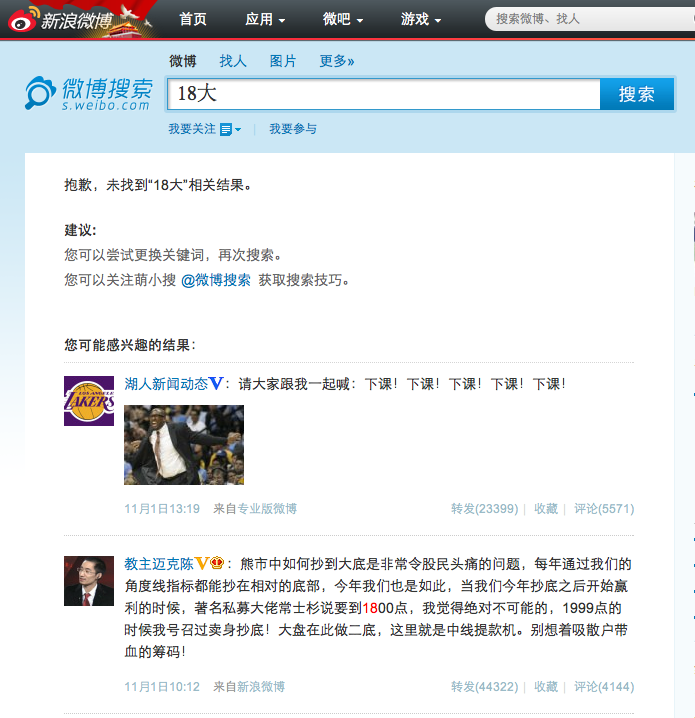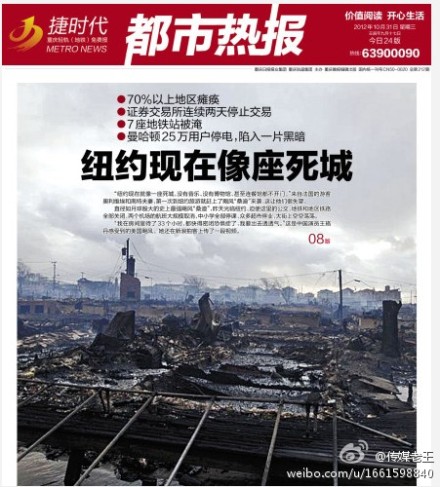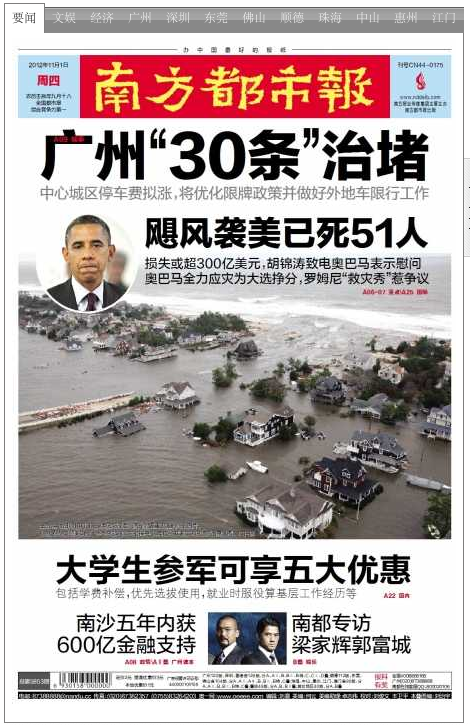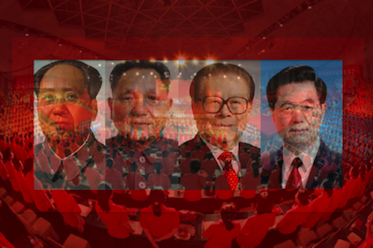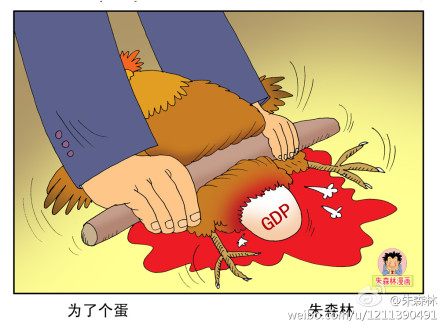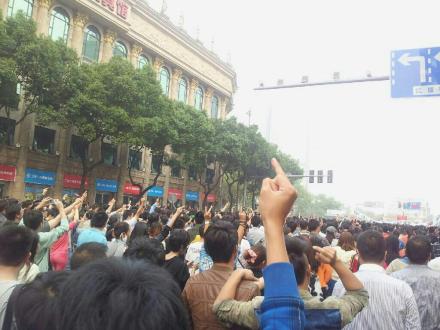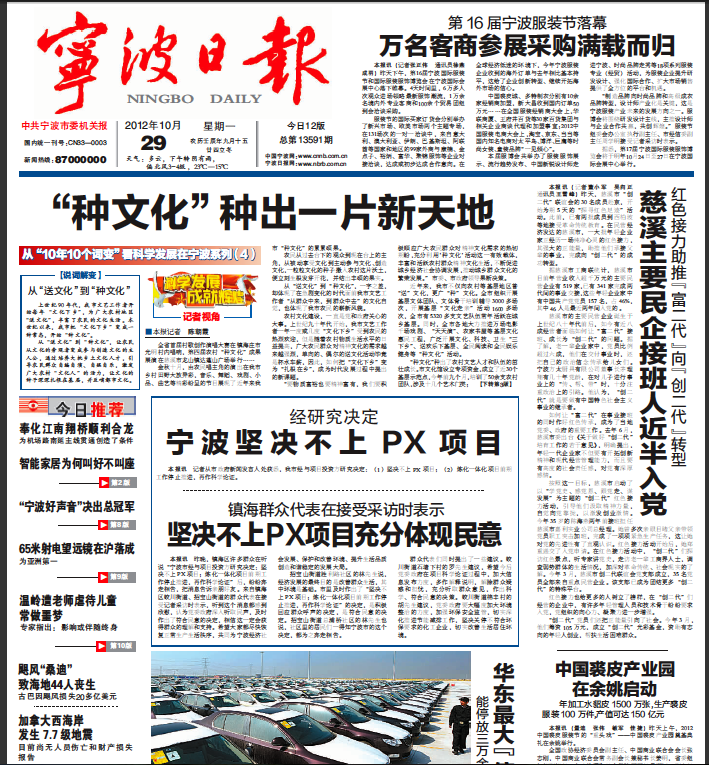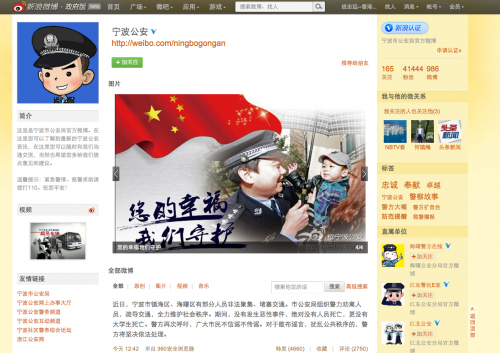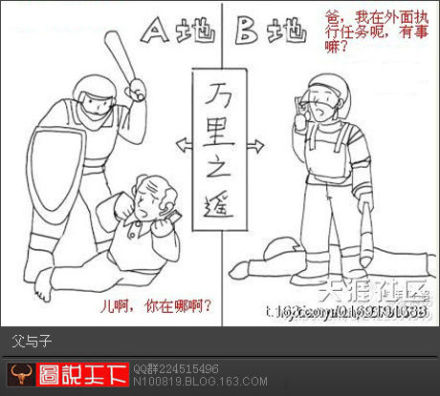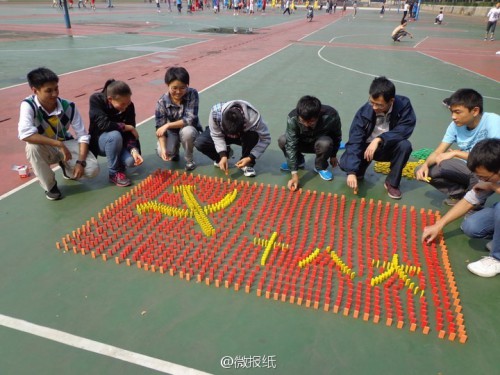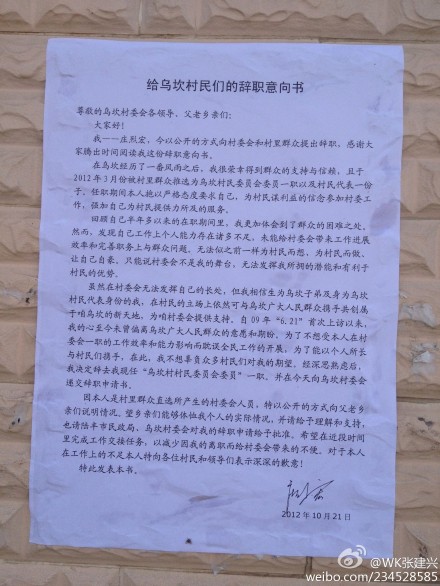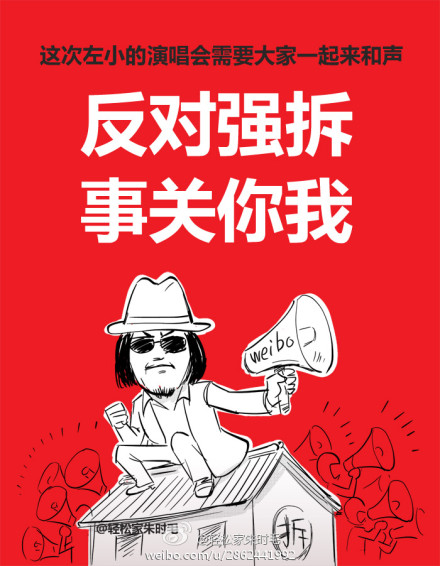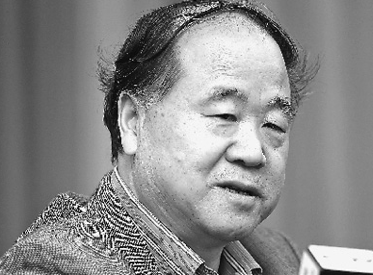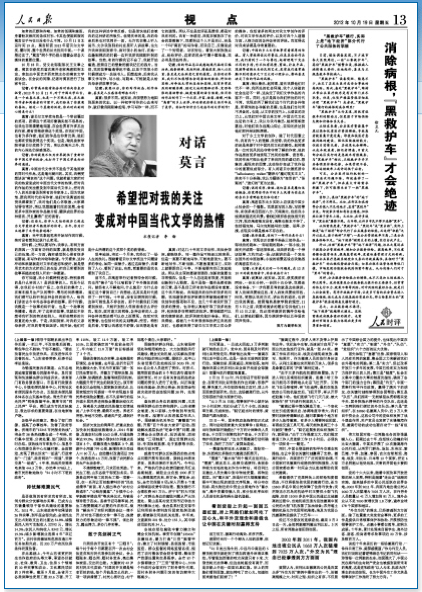Following several days of mass protests against two proposed petrochemical projects amid environmental and health concerns, officials in the coastal city of Ningbo announced late Sunday that the projects would be halted. The government’s announcement failed to deter protesters, however, who continued to gather outside the government offices Monday and demand that the city’s mayor step down.
Online, suspension of the projects was formally announced through the official social media account of the Ningbo government at 6:45 p.m. yesterday, October 28, 2012. The post read: “[We have] learned from a news spokesman from the Ningbo City Government that the city government has been decided after research with the project investor that: (1) the PX project will definitely not go forward; (2) preliminary work for the chemical refinery project will be halted and a scientific assessment redone.”
[ABOVE: Protesters outside the government offices in Ningbo on Sunday, October 28, 2012. Image shared by a Guangdong-based user on Sina Weibo.]
The halting of the project was also announced on the front page of today’s Ningbo Daily, the city’s official Party-controlled “mouthpiece.” Carried at dead center, the announcement read:
[After going] through [a process of] research
Ningbo Has Decided Not to Go Ahead with PX Project
经研究决定
宁波坚决不上PX项目
[ABOVE: The front page of today’s Ningbo Daily with an announcement of the termination of a PX project opposed by many residents.]
A second article on the front page did its best to frame the termination of the unpopular projects as an act of government grace.
After learning late Sunday of the government’s announcement, the article began, many residents “bounced off to pass the news along to their friends and relatives,” and “mass representatives” (群众代表) interviewed by the paper’s reporter felt “gratified” by the news, “feeling that the Party and government leadership had deeply listened to the voice of the people.”
These “mass representatives,” said the newspaper, also said they were certain the Party’s decision would “win the understanding and support of the masses.” They “hoped that everyone would as soon as possible return to normal, productive and orderly lives, working together for the economic and social development of Ningbo.”
A keyword search of “Ningbo” + “PX” in the WiseNews database returned just 10 articles in mainland Chinese newspapers today. Nine of these, including a report from the official China News Service, were based entirely on information provided by the Ningbo government. The tenth was an editorial in the Chinese-language Global Times newspaper sounding a worrying tone about the rise of street politics in China:
Some say that the people of Ningbo have won. But in our view, there can be no winners in a situation where this method of resistance by the masses on the streets and in the public square comes to decide such a complex matter as that of the fate of a major chemical project — and it seems even more that all of China is the loser.
In the second front page report today, the Ningbo Daily suggested local leaders had recognized to some extent that the recent protests were the result of a failure of communication. Leaders pledged to “increase the strength of information release [in the future], offering more explanations and removing the doubts and concerns of the masses.”
But as the limited choice of newspaper reports indicates, precious little information is still available on what is happening in Ningbo, and why. The “masses,” whether in Ningbo or anywhere else in China, are now left mostly in the dark on this story.
The difference between darkness and “mostly in the dark,” of course, is the sum total of shifting content on Chinese social media.
Many images and video posted to Chinese social media from the scene in Ningbo have already been deleted — and some users reported Sunday that Ningbo-based users were unable to post content. But Sina Weibo and other platforms remain the primary source of information on this story.
In a further illustration of how the propaganda game is shifting in China, Chinese authorities have found themselves levering the strength of social media to attack the reliability of social media — even as they choke off all reliable information not of government origin, thereby further fueling demand for “rumors” (true or not).
At 12:42 p.m. today, October 29, 2012, the following message was posted to Ningbo Public Security (宁波公安), the official social media account of the Ningbo police:
In recent days, in Ningbo’s Zhenhai District (镇海区) and Haishu District (海曙区), a number of persons have illegally assembled, blocking traffic. The city’s public security bureau organized police to encourage people to leave and get transportation flowing. In the midst of this, no malign incidents occurred. There were absolutely no deaths of any persons [as a result], and certainly not university students who died. The police once again call on the residents of the city not to believe rumors or spread them. In cases where the spread of rumors does harm to public order, the police will handle this firmly in accordance with the law.
近日,宁波市镇海区、海曙区有部分人员非法聚集、堵塞交通。市公安局组织警力劝离人员,疏导交通,全力维护社会秩序。期间,没有发生恶性事件,绝对没有人员死亡,更没有大学生死亡。警方再次呼吁,广大市民不信谣不传谣。对于散布谣言,扰乱公共秩序的,警方将坚决依法处理。 今天 12:42 来自 360安全浏览器 转发 (4659) | 收藏 | 评论 (2749)
[ABOVE: A post made to the official police microblog in the city of Ningbo on October 29 urges citizens not to believe rumors that people were killed in clashes with police over the weekend.]
Among the rumors circulating on Weibo is one claiming that local “stability preservation” authorities in Ningbo have said the order to suspend the PX project came down Sunday from China’s security chief, Zhou Yongkang (周永康). There is no way to know whether this is true, but it certainly speaks to the sensitive timing of the Ningbo protests. With the 18th National Congress just around the corner, national leaders are no doubt eager to ensure that China looks to itself and to the rest of the world like a happy and harmonious place.
One of the most interesting dynamics we see again in the Ningbo PX case is the face-off between social media and “stability preservation,” in recent years the Party’s most robust method of dealing with social instability.
Rapid economic development in the absence of transparent and inclusive institutions in China has generated an upswell of social unrest. Party leaders have tried to balance this equation with massive spending on “stability preservation,” the mobilizing of domestic security forces against the population. But in some sense, social media are now upsetting this equation. Thanks largely to social media, the tactics of “stability preservation” are increasingly under scrutiny.
Perhaps nothing better expresses this dynamic than a cartoon shared on Sina Weibo in recent days, in which mobile phones face off against a phalanx of armed police with shields, clubs and rifles.
Mao Zedong famously said that “Political power grows out of the barrel of a gun.” Surely, though, he never envisioned the mobile phone glaring back, the eye connected instantly to millions of others.
